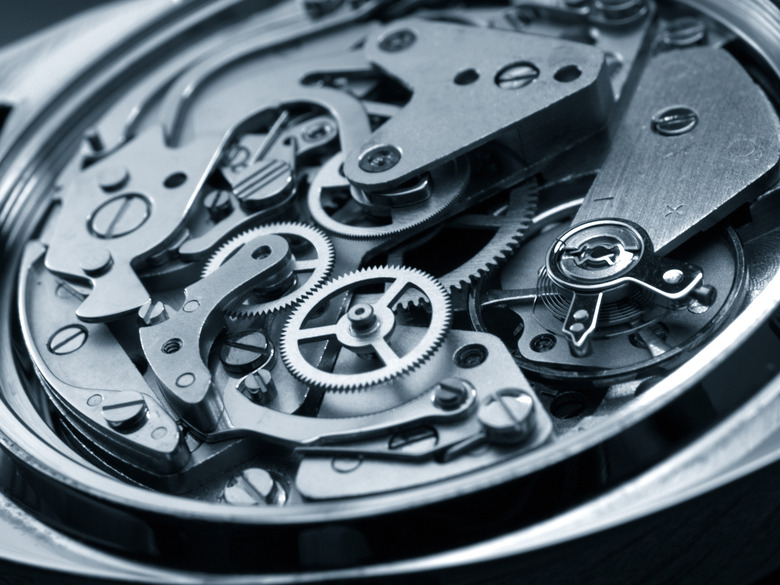Difference Between Simple & Compound Machines
In the general sense, a machine is an apparatus that uses energy to perform work. Machines have an enormous range of applications in the industrial, commercial, residential and every other field that produces or studies things. The two basic types of machines are simple machines and compound machines. The difference between simple and compound machines is that a compound machine is a collection of simple machines working in tandem.
Simple Machines
Simple Machines
A simple machine is the simplest device that performs work. A simple machine applies a single force to a single load and generally acts as a building block in developing more complex, compound machines. Simple machines usually fall into one of six categories, including: lever, wheel and axle, pulley, inclined plane, wedge and the screw. Simple machines do not contain an energy source so cannot perform more work than is applied to them in their use.
Types of Simple Machines
Types of Simple Machines
A lever is an object that acts as a pivot point that multiplies the force that can be applied to another object. The wheel and axle is a rod attached to a wheel which can multiply an applied force. A pulley consists of a wheel on an axle with a rope running over the wheel. Pulleys are used to change the direction of an applied force. The inclined plane is a flat surface with ends at different heights. Inclined planes reduce the amount of force required to move an object. Wedges are triangular-shaped and used to separate, hold or lift an object. Screws are cylindrical shafts with grooves that pass through or move other objects through rotational force.
Compound Machines
Compound Machines
Compound machines are a collection of simple machines working together. Compound machines are the most common type of machine and do more complex work than individual simple machines. They perform more work and therefore offer a greater advantage than simple machines alone. Compound machines may consist of various and innumerable combinations of simple machines
Types of Compound Machines
Types of Compound Machines
There is a huge variety of compound machines available to assist with a large number of tasks. Several examples of compound machines include: bicycles, pliers, wheelbarrows and scissors. In bicycles, the pedals and wheels form cooperating wheel and axle systems, the brakes are levers and the parts are held together with multiple screws. Pliers are constructed with multiple levers. A wheelbarrow is a combination of a lever and wheel and axle. Scissors consist of two pivoting levers.
Cite This Article
MLA
Braybury, Luc. "Difference Between Simple & Compound Machines" sciencing.com, https://www.sciencing.com/difference-between-simple-compound-machines-8111974/. 13 March 2018.
APA
Braybury, Luc. (2018, March 13). Difference Between Simple & Compound Machines. sciencing.com. Retrieved from https://www.sciencing.com/difference-between-simple-compound-machines-8111974/
Chicago
Braybury, Luc. Difference Between Simple & Compound Machines last modified March 24, 2022. https://www.sciencing.com/difference-between-simple-compound-machines-8111974/
